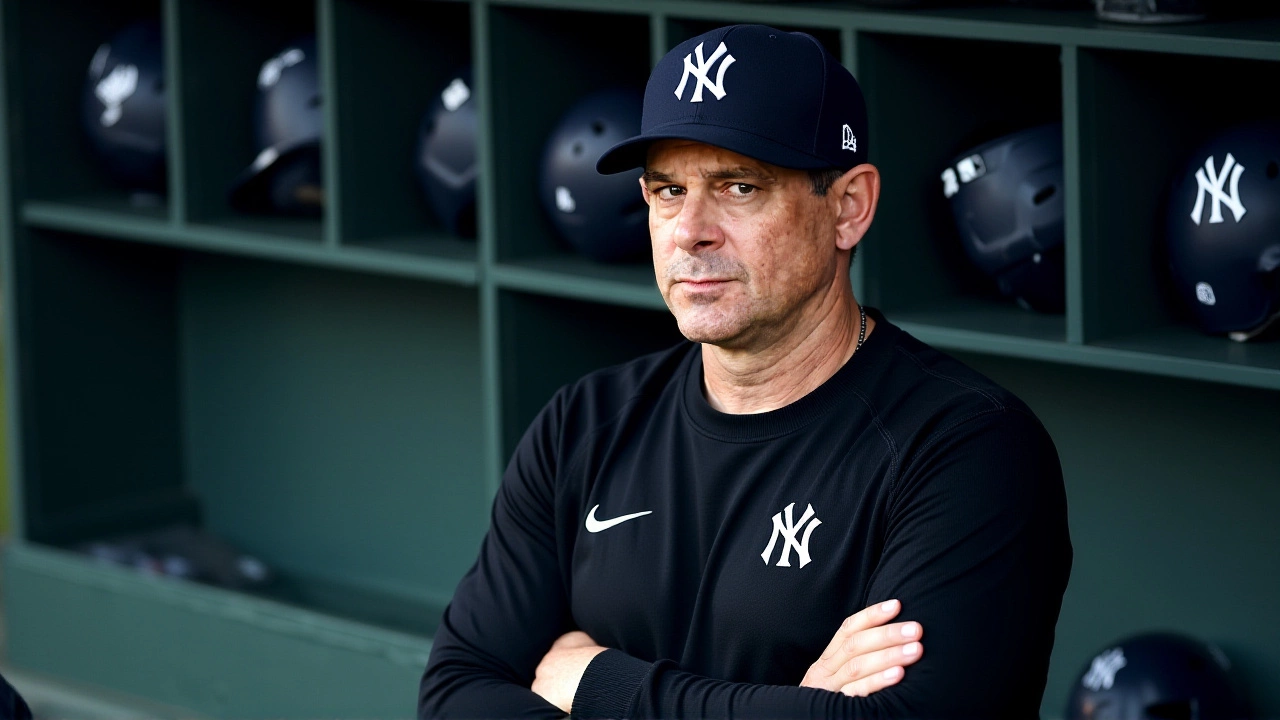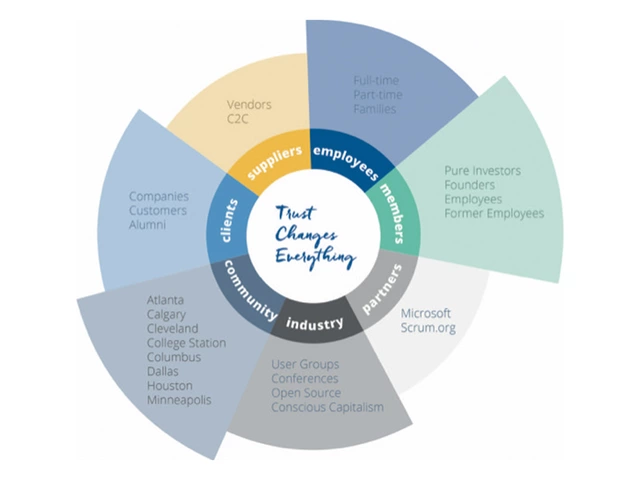When Aaron Boone, manager of the New York Yankees, announced the benching of left‑handed slugger Paul Goldschmidt during Game 3 of the American League Championship SeriesYankee Stadium, fans knew they were witnessing a classic matchup‑based chess move. The decision, made on October 16, 2024, sparked a wave of analysis because it pitted a proven power hitter against the Cleveland Guardians’ left‑handed ace Tanner Bibee, who had crippled lefty batters all season.
Why the Move Felt Inevitable
Boone’s reasoning was simple and data‑driven: Bibee held left‑handed hitters to a meager .198 batting average and a .590 OPS in 2024, according to MLB.com’s October 1 stats release. In contrast, Goldschmidt’s 2024 line – 22 homers, 83 RBIs, and a .259 average over 147 games – had been a bright spot for a Yankees offense that struggled against right‑handed pitchers early in the year. The manager’s own analytics team logged 18 similar lineup tweaks against platoon‑split pitchers during the regular season, a pattern The Athletic’s September 25 report highlighted.
Game 3 Overview: A Tight Battle
The elimination game unfolded under a brisk October night in the Bronx, with 49,867 fans filling Yankee Stadium and generating roughly $8.2 million in ticket revenue, per the Team Marketing Report. The Guardians took an early lead, and the Yankees trailed 4‑3 heading into the seventh inning when Boone pulled Goldschmidt and inserted DJ LeMahieu to face Bibee’s right‑handed relievers. The move paid off briefly – LeMahieu’s double sparked a two‑run rally – but the Guardians answered back, ultimately winning 6‑5 and sealing the Yankees’ postseason fate.
Voices from the Booth and the Bench
ESPN’s senior analyst Buster Olney praised the statistical logic on "Baseball Tonight" at 11:30 PM EDT, saying, "Boone’s move is sound on paper; Bibee’s left‑handed dominance is real. But you gamble with power in an elimination game, and that could cost you late‑inning runs." Goldschmidt, ever the professional, responded in an October 17 interview with MLB Network: "I completely understand the chess match here. Bibee has owned lefties all year, and Boone had to make the tough call for the team’s best chance." Meanwhile, a visibly frustrated Aaron Boone reiterated at the post‑game press conference, "The matchup numbers were overwhelming. We trusted DJ to handle the right‑handed bullpen later."
Financial and Contractual Ripples
Goldschmidt’s one‑year, $12.5 million deal, signed on December 7, 2023, now hangs in the balance. The Yankees must decide by November 7, 2024, whether to exercise the club option for 2025. A benching in a high‑stakes game could sway that decision, especially as the team’s front office evaluates the cost‑benefit of a veteran left‑handed bat versus emerging right‑handed prospects. The move also underscores the Yankees’ broader $6 million‑per‑year managerial investment in Boone, whose three‑year extension (signed November 7, 2023) has kept him at the helm through four straight postseason trips.
Historical Lens: Platoon Baseball in the Postseason
Boone isn’t the first manager to yank a big bat for platoon reasons. In 2018, Boston’s Alex Cora sat out a lefty‑heavy starter to protect Christian Vogt, a move that sparked debate then and now. The Yankees’ own 2001 "Knightmare" lineup saw Derek Jeter sit for a left‑handed pitcher in Game 6 of the World Series, a gamble that backfired. What separates Boone’s decision is the modern analytics depth: his internal database, accessed by The Athletic, logged split‑season opponent tendencies down to a .001 winning‑percentage margin.
What’s Next for the Yankees?
Looking ahead, the Yankees will regroup for the offseason, focusing on bolstering their left‑handed depth. Rumors already swirl about potential trades for a left‑handed reliever who can neutralize pitchers like Bibee. The front office also faces a looming free‑agent market, with credit to Boone’s willingness to make unpopular but data‑backed calls – a philosophy that could shape roster construction for the 2025 campaign.
Frequently Asked Questions
How does benching Goldschmidt affect the Yankees' power lineup?
Goldschmidt accounted for 22 home runs and 83 RBIs in 2024, ranking among the team's top power sources. Removing him in an elimination game reduced late‑inning slugging potential, forcing the Yankees to rely on smaller‑ball options like DJ LeMahieu, which may have limited run production against the Guardians’ bullpen.
Why was Tanner Bibee such a dangerous opponent for left‑handed hitters?
Bibee’s 2024 split showed a .198 batting average and .590 OPS against lefties, well below his .300 average versus right‑handed batters. His sidearm delivery and sharp breaking ball made him especially tough on left‑handed swing paths, prompting Boone’s match‑up concern.
What does this decision say about Aaron Boone’s managerial style?
Boone’s choice highlights a data‑first philosophy. He’s willing to sideline a star when analytics suggest a platoon disadvantage, even in a do‑or‑die scenario. This mirrors his 18 regular‑season lineup tweaks based on platoon splits, emphasizing strategic rigor over sentiment.
Will the Yankees exercise Goldschmidt’s 2025 option?
The decision remains undecided. While Goldschmidt’s overall season was solid, the benching in the ALCS may raise questions about his suitability against high‑lefty splits. The front office will weigh his contract cost against potential left‑handed replacements before the November 7 deadline.
How have other teams handled similar platoon challenges in the playoffs?
Historically, managers like Alex Cora (Boston, 2018) and Kevin Cash (Tampa Bay, 2020) have benched power hitters in favor of platoon splits. Results have been mixed; Cora’s move backfired, while Cash’s decision helped secure a win. Boone’s gamble aligns with this trend of analytics‑driven lineup sculpting.







Write a comment